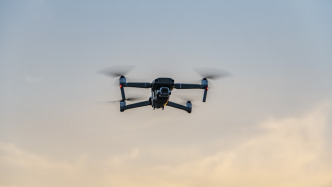Xinhua News Agency, Nanjing, September 24th, Jupiter, the largest planet in the solar system, will run to the closest position to the earth in this round of conjunction cycle on the 26th. Wang Kechao, director of popular science at the Purple Mountain Observatory of the Chinese Academy of Sciences, said that the Jupiter-Earth "reunion" is about 3.95 AU, or about 591 million kilometers. What happened to Jupiter's "meeting" with Earth? What does it have to do with the well-known "Jupiter opposition"? Popular science experts from the Purple Mountain Observatory of the Chinese Academy of Sciences will answer your questions one by one.
Jupiter is the fifth-closest planet to the sun and the largest planet in the solar system. Its mass is about 2.5 times the mass of the other planets in the solar system combined, and this huge mass produces a strong gravitational force that enables it to capture many asteroids and comets that pass near its orbit. Jupiter is therefore known as the "big broom" in the solar system, and to a certain extent it has also become a "protector" for the Earth to clean up the celestial bodies.
Wang Kechao introduced that both Jupiter and the earth revolve around the sun, and their distances are far and near. The conjunction period of the two planets is 399 days, or about 13 months. In each cycle, Jupiter and Earth will usher in a "reunion". But because the two orbits around the sun are elliptical and there is an inclination, the closest distance between the Earth and Jupiter in each conjunction cycle will also be different.
Following the "meeting" between Jupiter and Earth on the 26th, Jupiter will be in opposition to the sun again at 3:33 on the 27th. Exoplanets such as Jupiter are bright and have a large apparent diameter for a period of time before and after opposition, making them suitable for observation. "But in fact, there is a difference in the moment of reaching the closest distance between the opposition sun and Jupiter." Wang Kechao said that the so-called "opposition sun" refers to the 180-degree difference between Jupiter and the sun's geocentric optical longitude, that is, the earth , Jupiter revolves around the sun to the moment when the same side of the sun is approximately aligned in a straight line. This moment is closer to the moment when Jupiter and the Earth "meet", but it is not consistent.
And this year's Jupiter opposition, Jupiter is located near the perihelion, which means that Jupiter is closer to the earth, and it looks bigger and brighter, and the interested public can take a look.




Comments